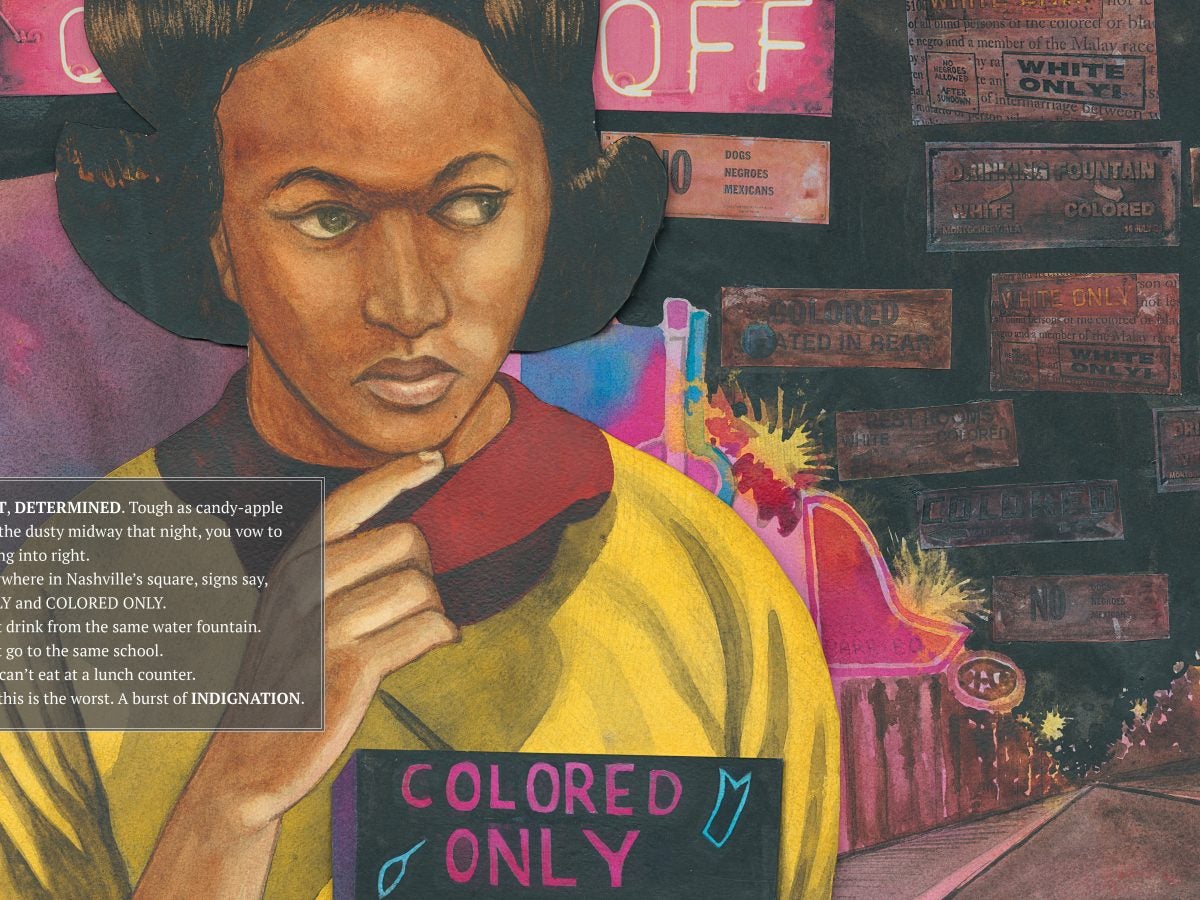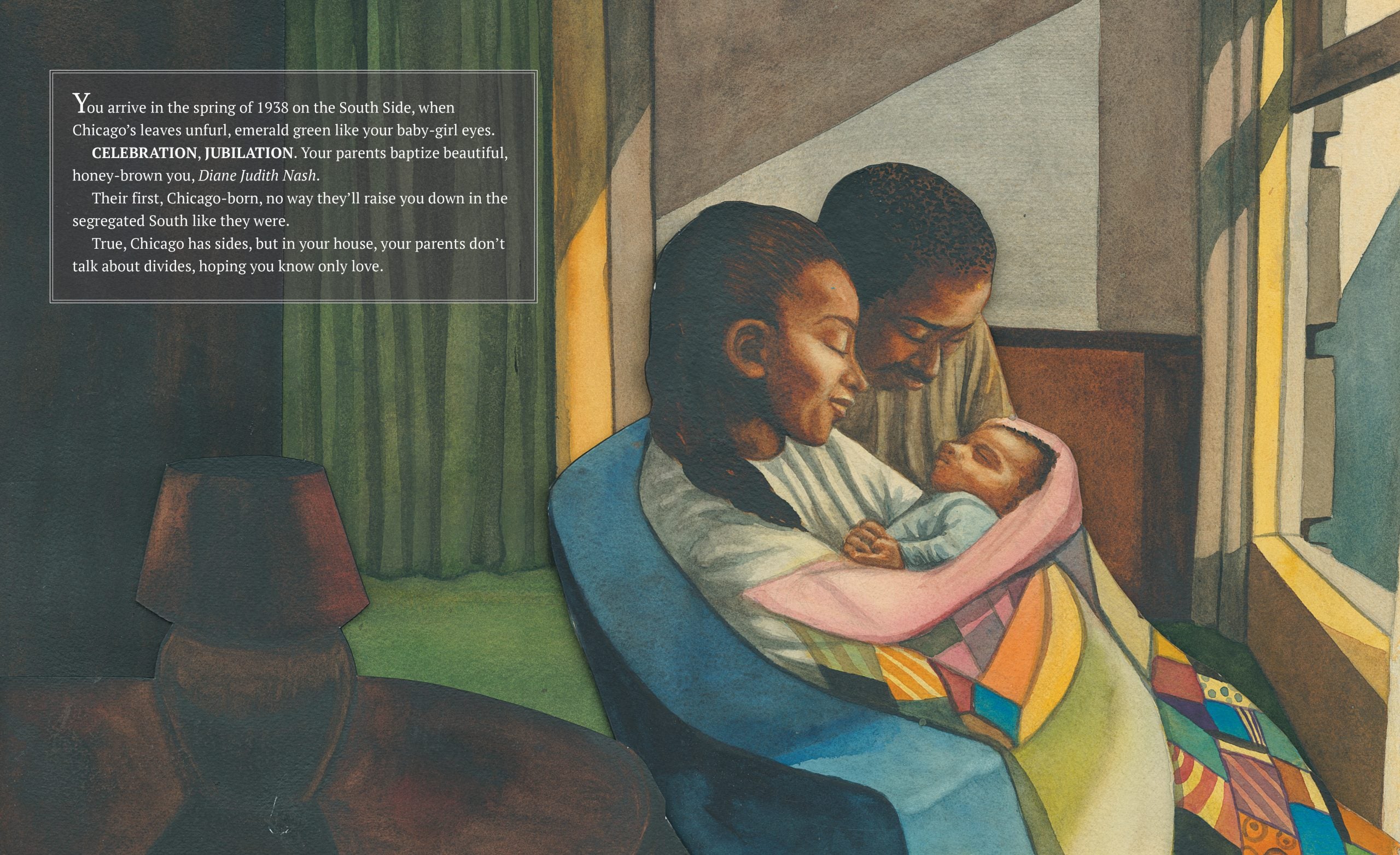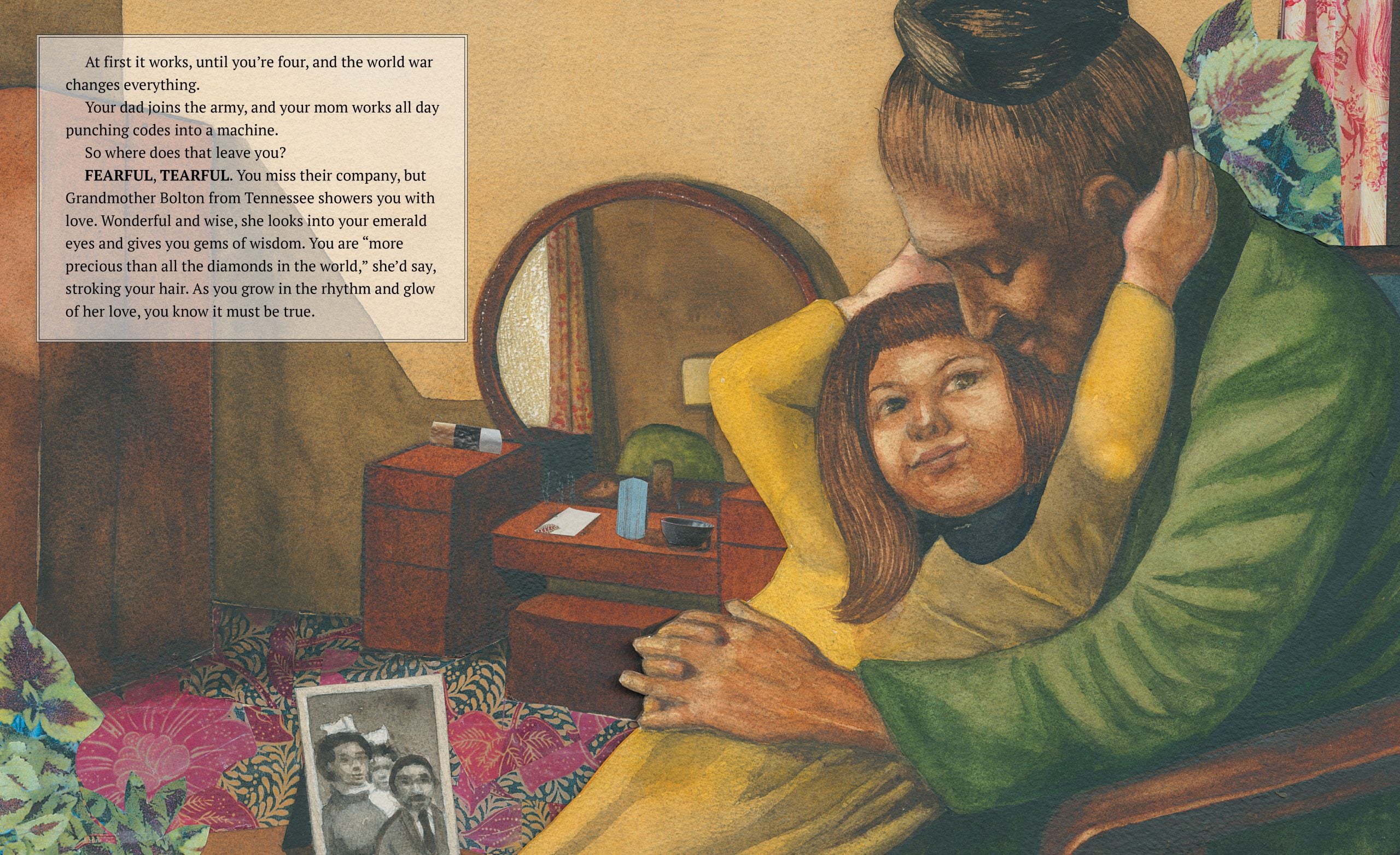
Award-winning author and former ESPN reporter Sandra Neil Wallace has once again teamed up with illustrator Bryan Collier to pen a story about Diane Nash, a powerful and important civil rights leader whose story is oftentimes overlooked.
A founding member of the Student Nonviolent Coordinating Committee (SNCC), Nash was an instrumental part of “the sit-in movement in Nashville, TN and became one of the most esteemed student leaders and organizers of the time.” According to James Forman, “Diane Nash Bevel was responsible for the organization of a lot of us, including myself.”
Through Nash’s work as a strategist, organizer, and fieldworker, she would go “on to help organize the 1963 Birmingham desegregation campaign and worked alongside Dr. Martin Luther King Jr. and SCLC during the Selma Voting Rights Campaign.”
Diane Nash is one of the most influential and effective leaders of the Civil Rights Movement in the 1960s. If you look at the body of her work and her success, she’s as integral as Martin Luther King Jr. and John Lewis.
Both Wallace and Collier believe that it is crucial to tell the story of Diane Nash to ensure that the legacy of her life and work can be celebrated. ESSENCE had the chance to talk with both Wallace and Collier about their latest book “Love is Loud,” how they chose Diane Nash, the collaboration process, and what they hope for young readers to learn.

This interview has been edited for length and clarity.
ESSENCE: How did you first learn about Diane Nash and her story, and what inspired you to write this book?
WALLACE: I first heard about Diane Nash in 2012 when I was in Selma, Alabama conducting interviews for a biography on Jonathan Daniels, a seminary and voting rights activist, and I interviewed veterans of the movement who had been civil rights workers in the south. I learned how Diane Nash helped organize Selma’s voting rights marches, how she co-founded SNCC, and was also a coordinator with Dr. King’s organization.
Diane Nash is one of the most influential and effective leaders of the Civil Rights Movement in the 1960s. If you look at the body of her work and her success, she’s as integral as Martin Luther King Jr. and John Lewis, if we look at everything that Diane Nash led in the fight for change that she won, including integrating Nashville’s lunch counters through the Nashville sit-ins, integrating bus travel with the Freedom Rides, and gaining voting rights for Black voters in the south through the passing of the Voting Rights Act of 1965.
Yet, here we are, and many young people don’t know who she is. Young readers have access to lots of books about Dr. King and John Lewis, which is great, but “Love is Loud ” is the first picture book biography on Diane Nash. But it’s just one story, and I’m really hoping that there will be more.
COLLIER: I learned about Diane Nash through the “Eyes on the Prize” series, back in the 80s and 90s, and she popped up in it. It was just so astounding that she was so young and had so much fire, and no one was really talking about her even back then, the way they talk about the big players like Dr. King and Reverend Abernathy and Andrew Young and all those major figureheads in the Civil Rights Movement.
But, she had a pivotal role as well, and I’m so happy that we got to tell her story in a picture book format because no one has ever done a picture book on Diane Nash. Today, Diane Nash still gives talks about those times back then, and as she pairs it with our current situation in this world, and [how] our work still needs to be done and love still has to be loud and you still have to get out there. So that was one of the main motivations to collaborate and do a book like this, because the world needs it.

ESSENCE: What was it like collaborating with one another?
WALLACE : When I started collaborating with Bryan in 2016, conversations kept coming up about Diane Nash and her leadership and writing a picture book biography about her. We became creatives on “Love is Loud,” right from the beginning, which is not usually typical. We were really on board from the discussion stages, and Bryan really encouraged me to write the book.
Bryan is a visionary, and I’m so grateful that he really trusted my vision and elevated in such a beautiful and powerful way. This is the first time that I’ve also used second person narration and that was really the closest, most direct way to acknowledge Diane Nash’s living actions and the hope she held for America’s future.
COLLIER: Working with Sandra is great—this is our second book together! We did a book on Ernie Barnes, who’s a painter and pro football player as well, and very influential in terms of the art that he made, and so we got to this second book and she’s so meticulous in detail and storytelling. She’s a joy to work with.
Love is not quiet and meek, love is strong and powerful and loud, and that’s a metaphor for speaking out, marching, protesting, and voicing your viewpoint and some equality into the world.
ESSENCE: Why is it important for families to read Love is Loud?
WALLACE: I’m really hoping the message that young readers take away from the book is that love can be at the heart of justice, and that taking peaceful, powerful actions to stand up for your rights and stand up to hate can create change. Diane Nash really shows us that, and also to look for allies to support you and be allies of support. I want to reference that beautiful quote in our book from Diane Nash, where she explains why she did what she did, and she said, “although we had not yet met you, we loved you, and we were trying to bring about the best society that we could for you to be born into.”
COLLIER: It’s very, very important because we need to understand that being silent on injustice is not acceptable, and she did it with love. That’s why we called it “Love is Loud.” Love is not quiet and meek, love is strong and powerful and loud, and that’s a metaphor for speaking out, marching, protesting, and voicing your viewpoint and some equality into the world.
